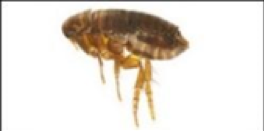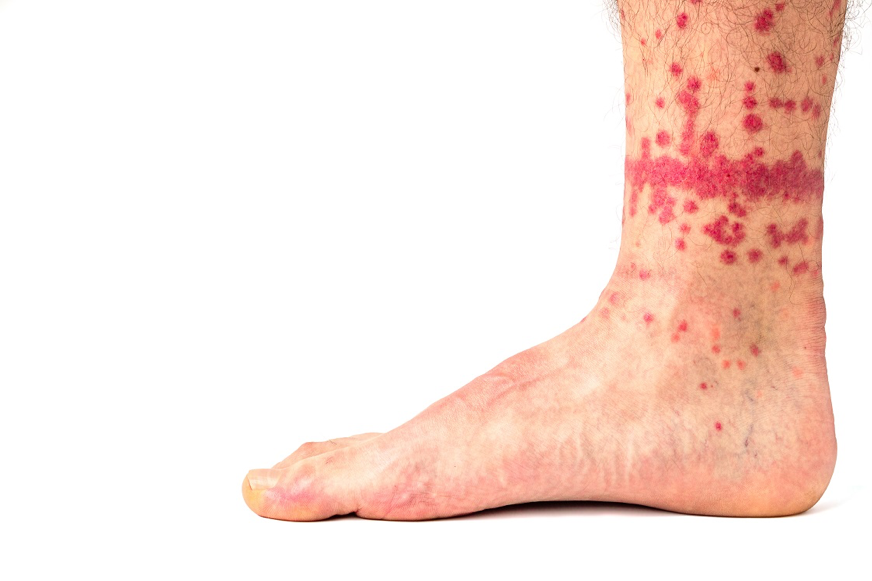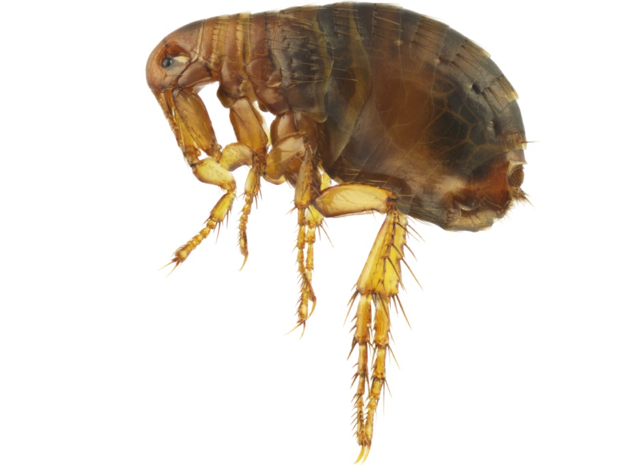
Fleas are tiny, wingless insects that measure about 1/16 of an inch in length. Most common in our Northern California backyard is the Reddish-Brown Cat Flea (Centocephalides Felis) which will attack both cats and dogs. Although they are very small, fleas can jump up to 8 inches vertically, which can sometimes be seen by the naked eye. Fleas aren’t just problematic for cats and dogs. If their eggs fall off of pets, fleas can live and breed in your carpet. You may not even know that a flea infestation has gotten out of hand until you spot them on your pet.
Where do fleas come from?
Flea infestations begin when an animal brings them into the home. This can be a result of a pet, or could be coming from a wild mammal like squirrels, raccoons, and feral cats. Flea activity in your home can also be a sign of a rodent or wildlife issue. Dogs can pick up fleas from contact with other dogs that have fleas. They are excellent jumpers, making it easy for them to travel from host to host.
Flea eggs are laid on your pet, then roll off wherever your pet decides to go… in your carpet, your pet’s bed, your sofa, dirty laundry and other areas you may be unaware of. As soon as they hatch, flea larvae wiggle deep down into carpet and furniture fibers, under leaves and into dark hiding places. Over the next several weeks they eat dried blood and other organic material, then spin a cocoon and pupate, which protects them against most sprays and chemical insecticides for 2-4 weeks and sometimes as long as a year. Flea pupae molt into adults and stay in the cocoon until a host comes by. Then they attack, jumping onto your pet in passing or possibly even you. Without breaking the reproductive cycle, fighting a flea infestation is usually an uphill battle.
Should I be worried about flea infestations?

Fleas can spread quickly since each female flea can between 400-800 eggs in her lifetime. They feed on the blood of their host which could easily be your pet or even your leg. Flea bites on humans tend to be around the feet, ankles, and lower legs, manifesting as red bumps surrounded by a halo shape. The bites can become very itchy and uncomfortable for both humans and pets.
If you pet becomes infested with fleas, you should contact your veterinarian immediately for professional assistance. Pets can be exposed to tapeworms, anemia, and skin irritation that leads to exposed wounds when suffering from flea biting.
How can I get rid of fleas in my house?
Vacuuming is a significant part of reducing flea populations indoors, but it will not completely solve the problem. Professional pest control is your best defense against flea infestations. There is little that you can do with store bought sprays and foggers to eliminate all of the fleas in your home once they have infested areas such as carpeting. If you find evidence of fleas on your pet, call your veterinarian. They may suggest a flea dip as well as specialized shampoos to eliminate the current fleas. If you have fleas in your house, you can also lessen the problem by vacuuming. Target your pet’s favorite spots to lay or spend time.

What Do It Yourself (DIY) options are available?
There is very little that you can do on your own to get rid of a flea infestation once it is established in your home because of the complexity of these infestations. The best “DIY” option is to use flea treatments for pets so that they don′t get fleas in the first place. Address rodent and wildlife infestations once you discover them or suspect they are in your home as quickly as possible to avoid the possible spread of fleas.
If you find fleas in your home, call AAI Pest Control right away! The quicker you call for help, the quicker we break down the flea populations that are living in your home. Give us a call or fill out the contact form on this page to schedule a flea inspection or start flea control services today!
What Are Fleas? Professional Pest Control Services in Tracy CA
Serving



